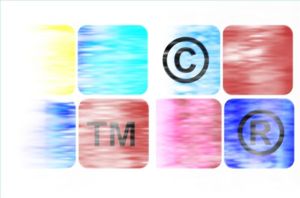Branding — What You Need to Know to Protect Your Brand Legally
By Sarah J. (Miller) Schneider, Attorney and CWCC Member
 It feels like a personal affront to receive a cease and desist letter just when your business is starting to turn heads. A cease and desist letter is a demand from a third party to stop using the name of your business because, well, it belongs to someone else. Should you have done something differently? Could this have been avoided?
It feels like a personal affront to receive a cease and desist letter just when your business is starting to turn heads. A cease and desist letter is a demand from a third party to stop using the name of your business because, well, it belongs to someone else. Should you have done something differently? Could this have been avoided?
Your trademark is the brand identity of your company – it represents the source and quality of the products and services you provide under the mark. Many new businesses start marketing their brand only to find out that, after spending money on advertising, product placement and packaging, their new business or product name infringes upon the trademark rights of another party. It is because your trademark is so important that you should stop, slow down and consider the legal side of branding before introducing a new mark to your customers.
First, come up with several name ideas and be prepared for a few of them to be taken. If you can invest some legal dollars, hiring a trademark attorney to assist you in evaluating the risks associated with adopting your new mark is best. However, even if you don’t work with a trademark attorney, do some initial investigation first. Conduct searches for your proposed trademark on the Internet with various spellings. Look at directory and business listings and search for the proposed mark in the U.S. Patent and Trademark Office database. Do not rely on the fact that the Secretary of State’s Office lets you form your business in their database as an indication that the mark is available for you to use.
A trademark need not be identical or used on the same type of goods or services to be considered infringing. The legal test for trademark infringement is if a consumer likely would be confused by the source of the product or service. The most important elements of the infringement test are the similarity of the marks and the similarity of the products or services. If you find someone else is already using your proposed mark for unrelated goods or services, you may be able to use the mark. Take DELTA airlines and DELTA faucets for example. Although they use the same mark, consumers do not believe the DELTA faucets are made by DELTA airlines. Famous brands that are more unique, however, have a much further reach with respect to unrelated goods. You could not, for example, start using COKE for tennis shoes, despite the differences in the goods.
Legally, the strongest trademarks are those that are fanciful, made up-words, think GOOGLE and XEROX, or commonly known words used arbitrarily, think APPLE and AMAZON . You can also combine different parts of words and create a new word, like ZIPLOC. Get a dictionary and a thesaurus, combine word parts and sounds together, consider unique words and be creative. Do many other businesses already use the name? If so, you are more likely to receive a cease and desist letter, and less likely to stand out in the marketplace.
Selecting and choosing a mark is not black and white, and there are many different things to consider in launching your brand, but determining the legal availability should be at the top of the list.
 Sarah Schneider is a trademark attorney with the intellectual property law firm of Sheridan Ross P.C. in Denver. She works with companies of all sizes and types to secure, protect and defend their trademarks and service marks. From bio-refining services to handbags, every product or service originates from somewhere, and Sarah helps ensure that consumers know for whom a brand speaks. From the first trademark application to applications around the world, Sarah finds it particularly rewarding to watch a client’s business and brand recognition develop and grow. She enjoys working with clients in a collaborative and educational manner and especially enjoys assisting clients with the legal aspects regarding use of brands in the interactive on-line environment.
Sarah Schneider is a trademark attorney with the intellectual property law firm of Sheridan Ross P.C. in Denver. She works with companies of all sizes and types to secure, protect and defend their trademarks and service marks. From bio-refining services to handbags, every product or service originates from somewhere, and Sarah helps ensure that consumers know for whom a brand speaks. From the first trademark application to applications around the world, Sarah finds it particularly rewarding to watch a client’s business and brand recognition develop and grow. She enjoys working with clients in a collaborative and educational manner and especially enjoys assisting clients with the legal aspects regarding use of brands in the interactive on-line environment.
Share this article:
Other Articles
